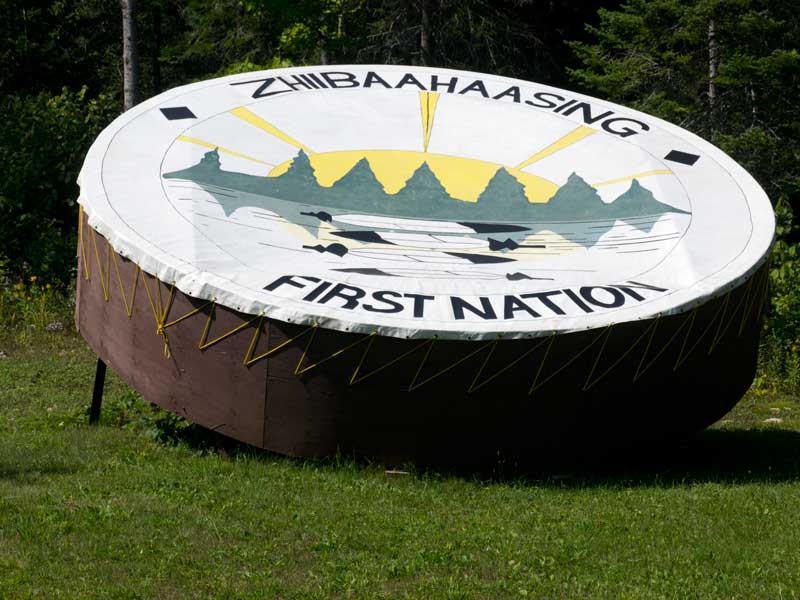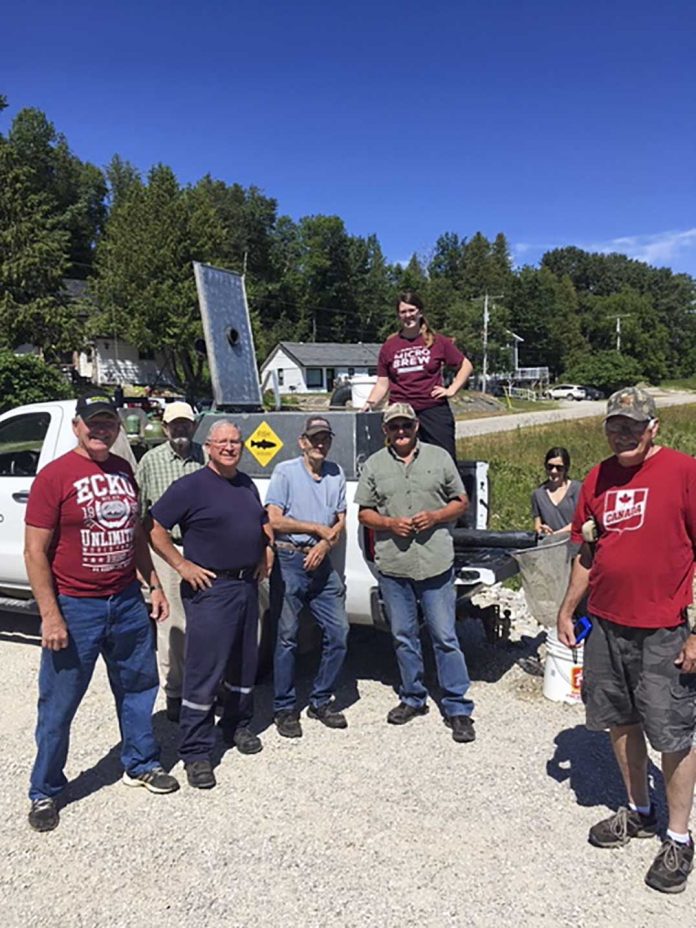ZHIIIBAAHAASING – A new citizen science water monitoring hub has been opened in Zhiibaahaasing First Nation, as announced by non-profit Swim Drink Fish.
“We need to make sure the water here is safe for our children and the future,” stated Jon Riberdy who assists Chelsea Antoine who is the coordinator and takes water samples through the new citizen science water monitoring hub opened in Zhiibaahaasing First Nation for the summer, through Swim Drink Fish.
Three citizen science water quality monitoring hubs are now testing the water and sharing water quality results with swimmers and boaters on the Great Lakes through ‘Swim Guide’, a free app and website.
The water quality hubs were created by Swim Drink Fish with $1.8 million in funding from Environment and Climate Change Canada’s Great Lakes Protection Initiative. Volunteers help hub coordinators collect water samples in places where people swim, boat and hold ceremonial activities, according to a press release. Swim Drink Fish analyzes the samples and tells the community if the water meets established standards for recreational water quality. The results are published in the Swim Guide (www.theswimguide.org) or on an Apple or Android app.
These hubs are part of a four-year demonstration project meant to engage underserved communities on the Great Lakes in water quality monitoring, data-sharing and stewardship, notes the release. Swim Drink Fish’s goal is to invent a scalable, sustainable model for ongoing water quality monitoring in Great Lakes communities. The hubs are also supported in part by the Anishinabek Nation and IDEXX.
Swim Drink Fish established the first monitoring hub in downtown Toronto through its Lake Ontario Waterkeeper initiative. The second hub launched in the fall of 2018 on Manitoulin Island is hosted by Zhiibaahaasing First Nation. The third hub was established in the spring of 2019 on the north shore of Lake Erie in the Niagara region. Water samples will be collected weekly in Niagara and Zhiibaahaasing First Nation and twice a week in Toronto. Local residents can volunteer or donated to support the monitoring hubs by visiting www.swimdrinkfish/citizen-science.
Gabrielle Parent-Doliner of Swim, Drink, Fish explained, “at this time last year Environment Climate Canada had a stream of funding that we had applied for. Our ambition is to have serviceable (swimmable) fishable, drinkable water.”
Swim Drink Fish is a small, non-profit group, said Ms. Parent-Doliner. “Through this program we’ve been sampling the Toronto downtown harbour since 2011. We were testing in the harbour where people are using the water where no sampling was being conducted. We wanted to see what the condition of the water is, get good science and be able to allow members of the public access to this information.”
“We were calling volunteers and found that people really wanted to get involved in this program,” said Ms. Parent-Doliner, noting the program now includes 10 countries and a total of 8,000 beaches. “People can check the water quality and we have found they really care about and love their water.”
Ms. Parent-Doliner pointed out, “most Canadians swim in unmonitored places.” She explained with the 2018 grant application being approved to 2022 for the program, “we are establishing six citizen science monitoring hubs in the Great Lakes. We currently have a citizen hub in Toronto, one in Zhiibaahaasing with Jon Riberdy and Chelsea Antoine. They also run the water treatment facility in Zhiibaahaasing and are our staff on site their and to run the program-testing on Cockburn Island as well.”
She pointed out the Anishinabek Nation is one of their partners and it is through this that Zhiibaahaasing was chosen as a site for the program. All on site coordinators are trained, and they monitor the water quality at beaches, taking samples regularly.
Ms. Parent-Doliner noted, “they have a lab on site, so they that test and analysis all the data that they collect, and the public can see the results of the testing for the beaches in Zhiibaahaaasing and Cockburn Island on the website www.theswimguide.orgcan search map.
Thus far testing has provided good water results in Zhiibaahaasing and Cockburn Island,” noted Ms. Parent-Doliner. She pointed out the testing will continue through September.
There is also an educational component for the community’s youth and elders where those in the community take part in a water literacy program to get an idea of what they should be looking for and they help take water samples along with the monitors.
Mr. Riberdy told the Recorder, “how this all came about is that Chelsea was on an internship program as a graduate through the UCCMM and her contract was closing. So I called the Anishinabek Nation requesting we be allowed to put a proposal together for the program. We actually started the program in late October.”
“Every day Chelsea does a check-in (testing of the water),” said Mr. Riberdy. “Kids are part of the program and become educated because they are taught to look for different things in the lake that could affect it.” He pointed out the water sampling is carried out on Rocky Beach (Gaanogwongapgishmok) in Zhiibaahaasing and the Sandy Beach on Cockburn Island where everyone swims.
Mr. Riberdy noted, “on the sampling so far everything has been good in terms of water quality.” He pointed out a Water Science Camp will take place for youth and elders this year on Cockburn Island. We are also planning to take the program to Lakeview and Sheshegwaning schools this fall.
“Most people believe the Great Lakes should be protected, but they don’t know what to do. The new monitoring hubs give people the knowledge and tools they need to better understand the health of the places they love to swim and boat. By promoting transparency and public participation, we can ultimately ensure swimmable, drinkable, fishable water for everyone,” said Mark Maatson, President and Waterkeeper, Swim Drink Fish.
Three additional hubs will be rolled out in 2020 and 2021. Two hubs will be established in First Nation communities in consultation with the Anishinabek Nation.





